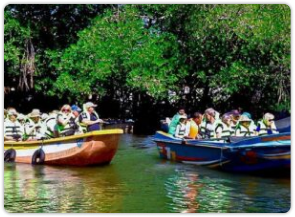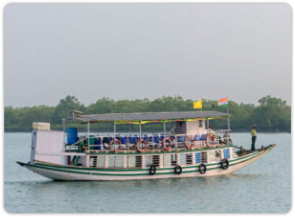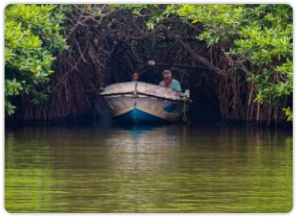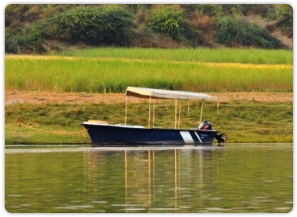Get Support
123-456-789-10
BOAT SAFARI
It’s time to start your adventure
Most travelers visiting Agra go to the Taj Mahal and head back not knowing that there is so much more to do in and around this city. On your next visit to Agra, consider going on a licensed river safari on the Chambal River (01 hour drive from Agra) , there is a resort called Chambal wildlife safari. The Chambal River Safari is no ordinary safari, you’re going on a safari (motorboats with trained naturalists and life jackets) on a river which was once the bad-lands of bandits and dacoits (like the wild-wild American West). The bandits are now long gone leaving behind a pristine, wild, and ‘alive’ river eco-system in this part of the country. During the safari you get to see on the riverbanks, gharials (the endangered fish-eating crocodiles), Indian marsh crocodile, 8 species of turtles, migratory birds, hyenas, jackals, jungle cats, various reptiles and the rare one – Gangetic River Dolphin (if you’re lucky).The ancient name of the Chambal was Charmanvati, meaning the river on whose banks leather is dried. The epic narrative the Mahabharata, refers to the Chambal River as the one which originate from the blood of sacrificed animals by the Aryan King ‘Rantideva’ The River made the southern boundary of Panchal Kingdom ruled by King Drupad
The legends of its curse by Draupadi and its bloody ‘unholy’ origins due to King Drupada have helped the Chambal to survive unpolluted by man, and its many animal inhabitants to thrive relatively untouched. The Chambal remains one of India’s most pristine rivers.
Part of the river was declared National Chambal Sanctuary which was founded in 1978 and is part of a large area of 5,400 kms. co-administered by three states of Rajasthan, Madhya Pradesh and Uttar Pradesh collectively. Approximately 400 km of the river is within the reserve’s area. This area lies between 24055′ to 26050′ N and 75034′ to 79018’E in District Dholpur and has a large arc described by the Chambal between Jawahar Sagar Dam in Rajasthan and the ChambalYamuna confluence in Uttar Pradesh Over this arc, two stretches of the Chambal are protected as the National Chambal Sanctuary. The sanctuary was gazette ‘in order to facilitate the restoration to “ecological health” of a major north Indian river system and provide full protection for the gravely endangered gharial(Gavialis gangeticus).




